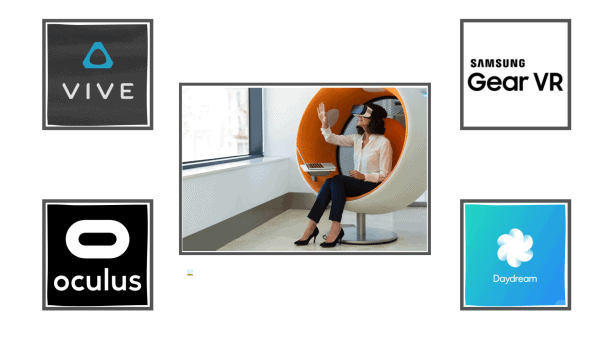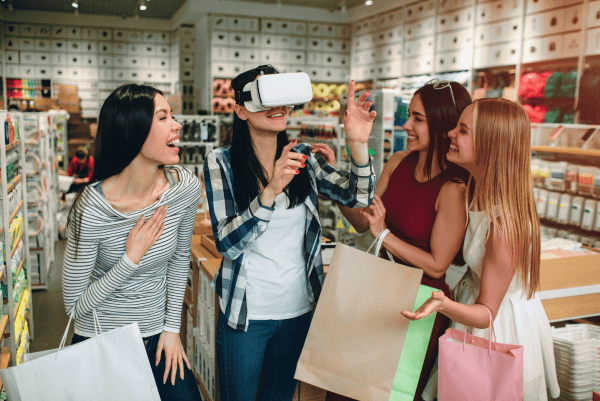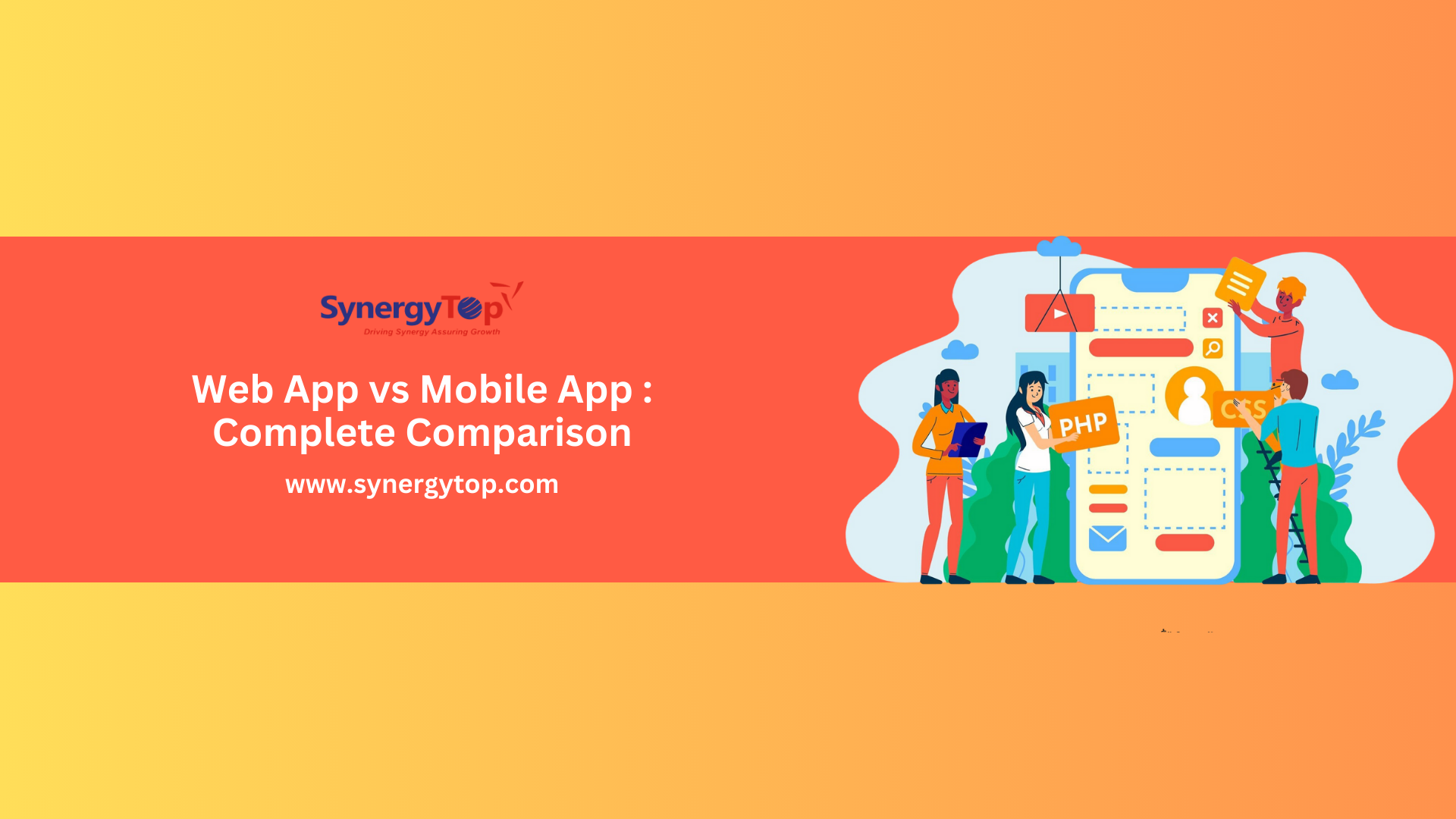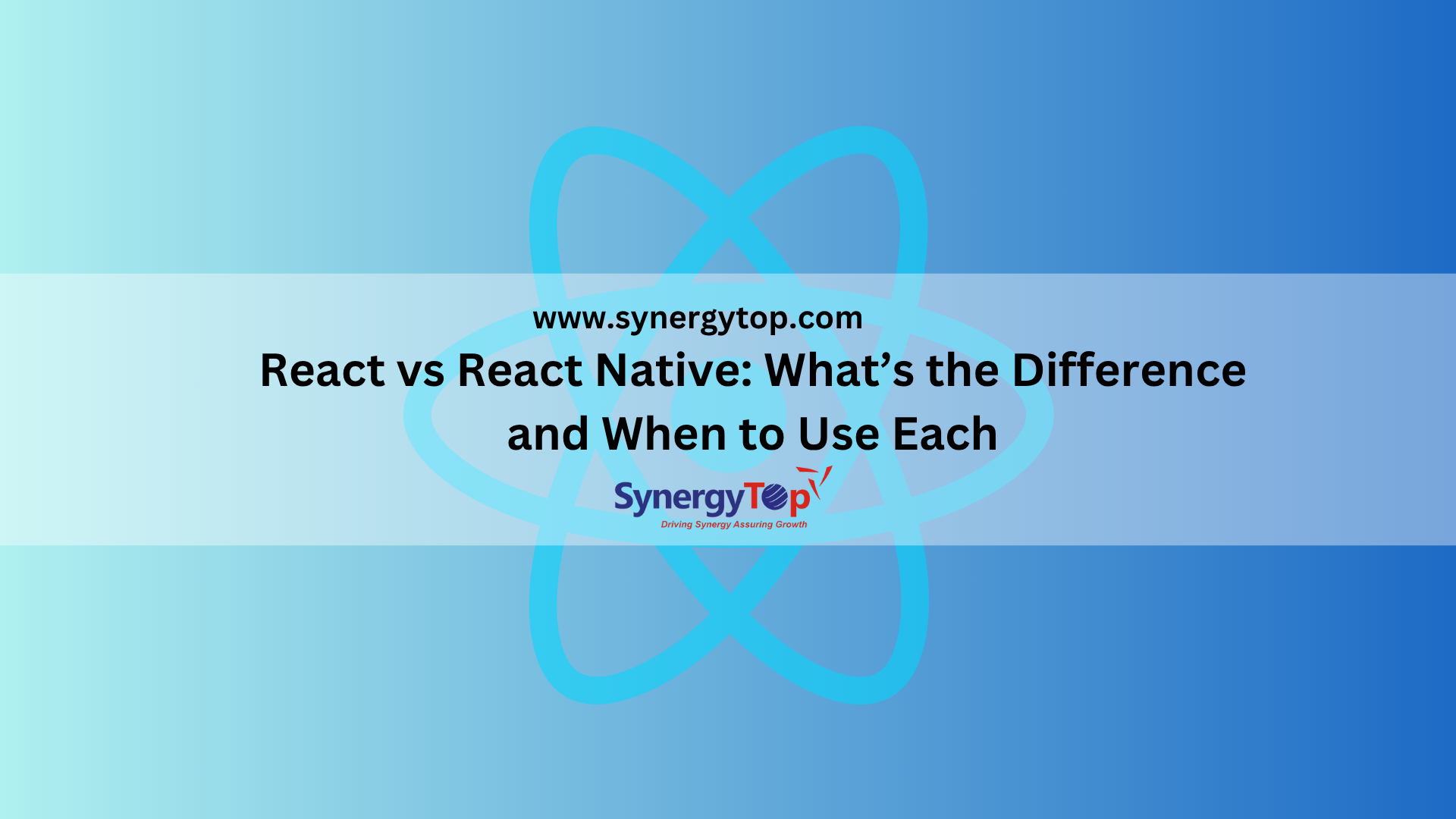As we all now know that Virtual Reality has made immense growth in the E-Commerce arena. With VR, a totally immersive perception is created and displayed. The incorporation of Virtual Reality and commercetools skilfully generates a 3-Dimensional view of your product in the enclosed environment.
What exactly is Virtual Reality?
Virtual Reality makes use of computer technology to create a fictitious environment. In VR, the user is stationed within an experience, unlike traditional User Interfaces. The users are able to interact and get immersed in the 3D world instead of having the screen in front of them. For this artificial world, the computer acts like a gatekeeper and replicate all the possible senses like vision, hearing, touch and smell.

There are a few dominant players in Virtual Reality with three bestselling VR headsets – Facebook’s Oculus Rift, Sony’s PlayStation VR (PSVR) and the HTC Vive. In 2019 and 2020, the landscape of VR is broadened with Lenovo, Google, HP and others striving to grab a piece of the booming market.
With VR, a customer can view a product, or even an entire custom virtual showroom, in interactive 3D from the store or their own home. Virtual Reality is an excellent way to display furniture, toys, electronics, cosmetics, boxes etc. with product information in a VR showroom.
The question is – What difference does it make if commercetools is incorporated in Virtual Reality shopping applications? Let’s find out.
VR and Shopping Apps
With Virtual Reality, a customer can see the product or a custom virtual showroom as well, in a 3-Dimensions from their own home. The desired items can be added to cart with a virtual click and later can be checked out with any device. The carts with commercetools are easy to access and stored for multi-channel use like Android, iPhone, Web and tablet.
Virtual Reality is an exceptional way to showcase electronics, toys, furniture, cosmetics and boxes with information of product in a VR showroom. Creating a fascinating experience with VR increases the chance that customer will buy the item they have carted. It also offers an extraordinary interaction with the brand so that shoppers are encouraged to keep coming back.
The Virtual User Interface
A developer can direct cart icons and menu in a deeply engaging view to provide a shopping experience. In that artificial environment, when an object is clicked, a popup comes into sight with price, product description and “Add to Cart” button. To develop the UI for the menus in your scene, try Unity’s UI Canvas. When clicked on the cart icon, a popup with the carted items can be manifested.
Virtual Reality and commercetools
commercetools works with most of the VR platforms like Oculus, Samsung Gear, HTC Vive, Google Daydream VR.

While working commercetools and VR development projects, we found following information can act as a starting point for anyone who is looking to get started on the same:
- commercetools http-api à https://docs.commercetools.com/http-api
- The commercetools http-apirequires a valid authorization token for all requests à https://docs.commercetools.com/http-api-authorization.html#password-flow
- On Oculus rift one could use C# and HttpWebRequest to retrieve the product information from the commercetools project.
- You can also checkout the cart via mobile device with the commercetools Swift SDK: https://github.com/commercetools/commercetools-ios-sdk
- You can also watch a demo application provided by Nicholas Speeter here – https://youtu.be/2weGUAyrUUQ
For the Customer and Beyond
Virtual reality is the easiest step to initiate for the retailers when there is a profound shift in the customer interfaces. Taking a step ahead is to be prepared for the increase in the use of voice interfaces and home assistants. commercetools being a microservice infrastructure, enable the retailers to experiment with virtual reality cost-effectively and quickly.
VR offer the users an immersive and engaging experience instantly. Also, the retailers are searching for new ways to revamp the physical store using audio and video screens along with lights. They are always challenged to deliver services beyond the expectations and on a personalized level. Most of the shoppers do comparative shopping on their mobile devices and all that a retailer can do is make their user experience exceptional. With virtual reality, the shoppers can be kept in the ecosystem both at home and in-store.
The real winners are customers with an access to even more engaging experience. They get all the answers to their relevant questions while browsing their favourite store. Any retailer/brand offering a virtual experience is the preferred by the shoppers. Here are some ways in which virtual reality transforms online shopping and customer service:
- Improved customer engagement and user experience
- Better customizable product information
- Enhanced brand awareness
- Increased store visitors
- Reduced product return rates
- Break language barriers
Conclusion
It is quite simple to incorporate commercetools with an existing Virtual Reality shopping application by using commercetools HTTP-API. The user interface can be kept simple with the appearance of just the VR canvas menus. Then, the items can be added to cart and checked out in-game or through another channel. This integration of commercetools will work with several VR platforms.

Creating a captivating VR experience increases the likelihood that a customer will keep the items they’ve carted and follow through with checkout. It also offers a unique interaction with your brand that encourages shoppers to keep coming back.
About SynergyTop
SynergyTop is a proud commercetools partner and it’s working towards achieving commercetools vision to help the rest of the industry embrace #MACH with the same passion as the 250+ commercetool’ers around the world.
SynergyTop leverages all the facility provided by commercetools like Accelerators, Integrators, Merchant center, Marketplace etc. to provide seamless commercetools implementations. At SynergyTop, we have a team of best in the industry consultants on headless commerce experience and cloud solutions. Write to us at contact@synergytop.com.

















